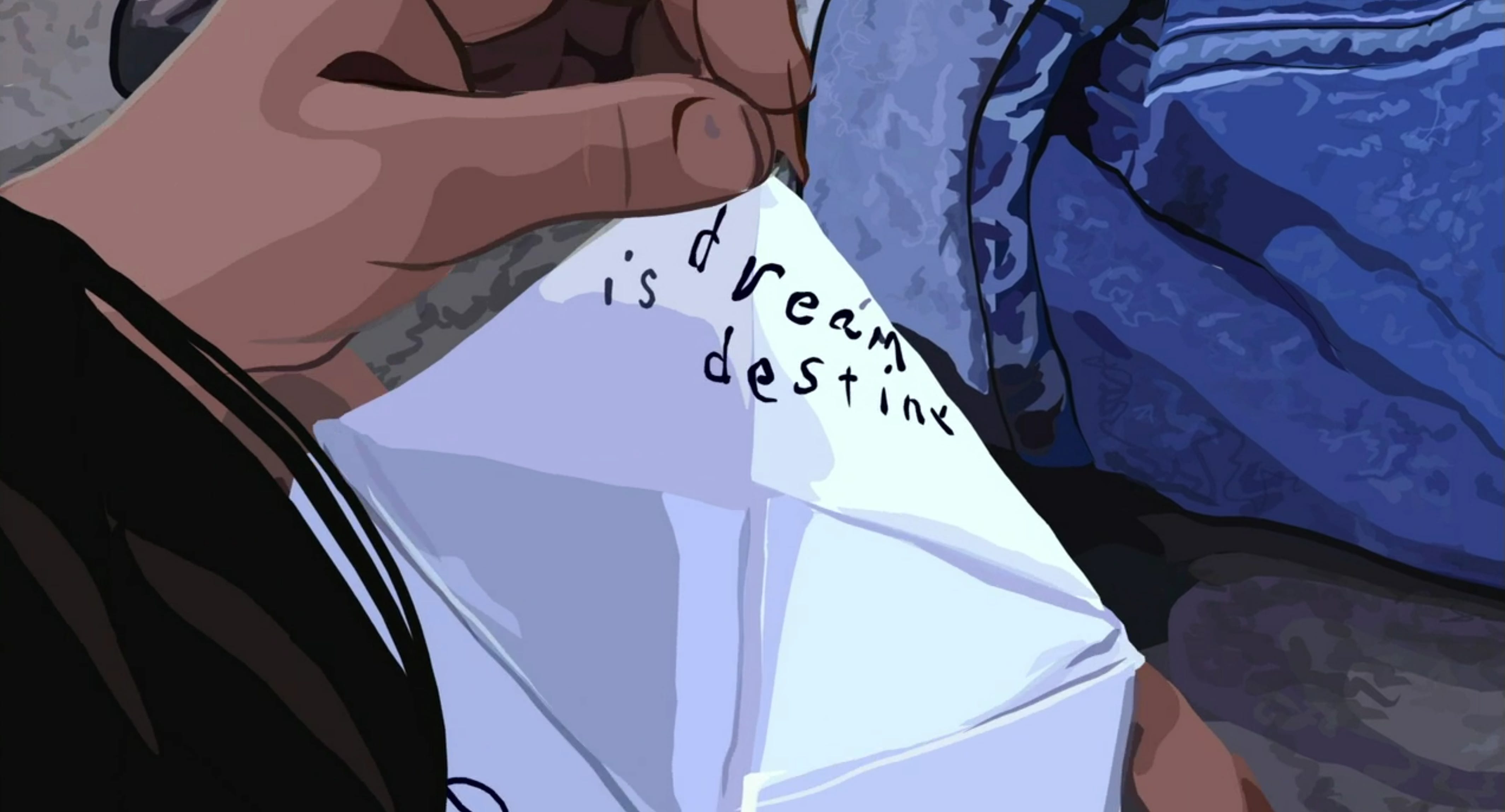
A Brief History of How We Got Here
Dear Friend and Reader:
When I first saw the film Waking Life by Richard Linklater in 2001, it shifted something for me. While I have a long list of books that have changed me deeply, the list of movies is rather short. I like them sometimes, and their art value is high, but most don’t affect me or teach me much. But some do, and right at the top of that very short list is Waking Life.
The structure of the film follows an unnamed protagonist (played by Wiley Wiggins) as he moves through existence caught in a dream from which he cannot awaken. He shifts from encounter to encounter, then falls asleep and wakes up only to realize he’s still in the same weird state, with his digital clock flashing nonsense.
Throughout the plot, he’s trying to get a grip on what’s happening to him. But the situation deteriorates. At first there is some coherence of thought; he has a series of conversations with philosophers. Then characters start doubling over and have new identities, dark emotions and seething rage bubble out, and someone lights himself on fire. Finally he meets a dream traveler who tells him a little about what’s going on.
The film was shot hand-held on consumer-quality 8mm video. This was transformed into a diversity of collage-like animation styles mimicking Rotoscope (drawing over live action, used by early Disney animators) using digital technology: a simulated digital dream.
Within this lucid (self-aware) dream state, the lead character has only limited power to control the flow of events. Other characters in the story are more active dreamers. He is disoriented, busy figuring out where he is and why.

I’m interested in dreaming and the phenomenon of dreams — something entirely understudied, with relevance more significant than nearly anyone admits. Yet after watching Waking Life countless times over its 25-year existence, it gradually occurred to me that the film is a metaphor for the digital age.
A few critics have pointed out related ideas, saying things like the theme of the movie is how mass media age results in “the effect of too much information and how it impinges on traditional notions of reality.”
But that comment and others like it miss the point that the all-encompassing and all-transforming digital environment has taken over physical and mental space.
We live within something; in a place and inside a space different than any we have lived before. It’s as if we’re all now living through a collective dream — some would say nightmare — from which we cannot awaken.
Unlike early in the digital age (when Waking Life came out), the internet is no longer a thing apart. It’s an environment that has swallowed everyone and everything, all relationships and nearly all activities. We are captured in a bizarre dream-logic that’s akin to someone leaving the cake out in the rain. Which is pretty much what happened.
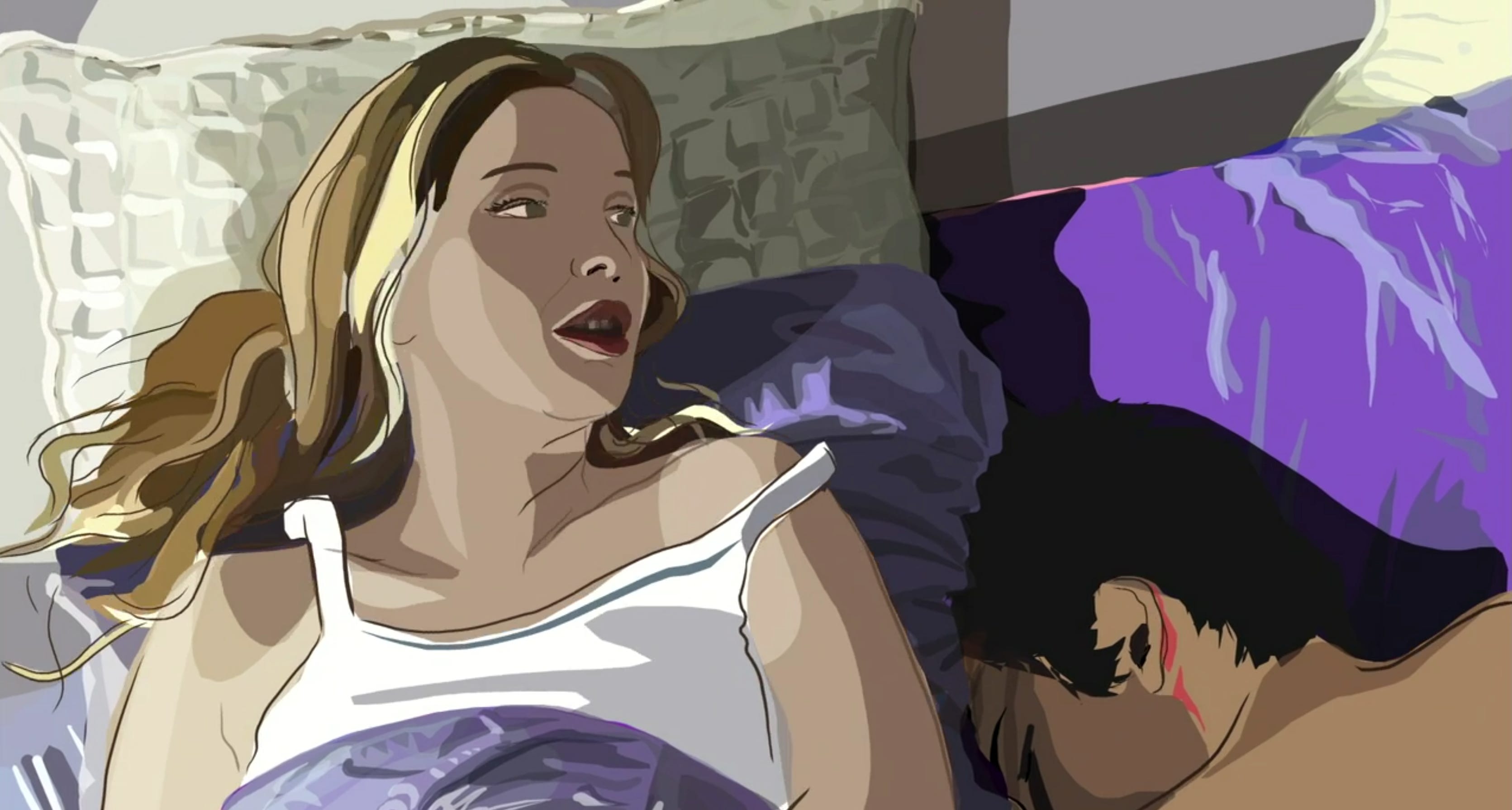
We don’t realize how extreme our circumstance is; I first described it a year ago. It’s a little like this. Imagine that at some time in the past, there was some mass casualty incident that killed everyone on Earth simultaneously. But nobody remembers the event. We all just woke up one day unaware we were in a replica world, close to the original, not realizing we’re in an astral copy of our former reality.
In this parallel or alternate existence, every concept is irrational. You fold paper and the corners don’t meet. To drive anywhere you need guidance from a satellite system.
Nothing “makes sense” because our physical senses are limited within the nonphysical. Relationships and emotions are all a little (or a lot) tweaked. Every social rule reversed itself overnight. People play along as if nothing is happening. Every day, nobody vaguely notices, or if they do they don’t say anything. Young people have no idea what world previously existed. To most of them, everything is more video. The past and all of its history is a deep fake.
As I wrote last year, “Digital creates a sense of parched thirst without understanding there is such a thing as water.”
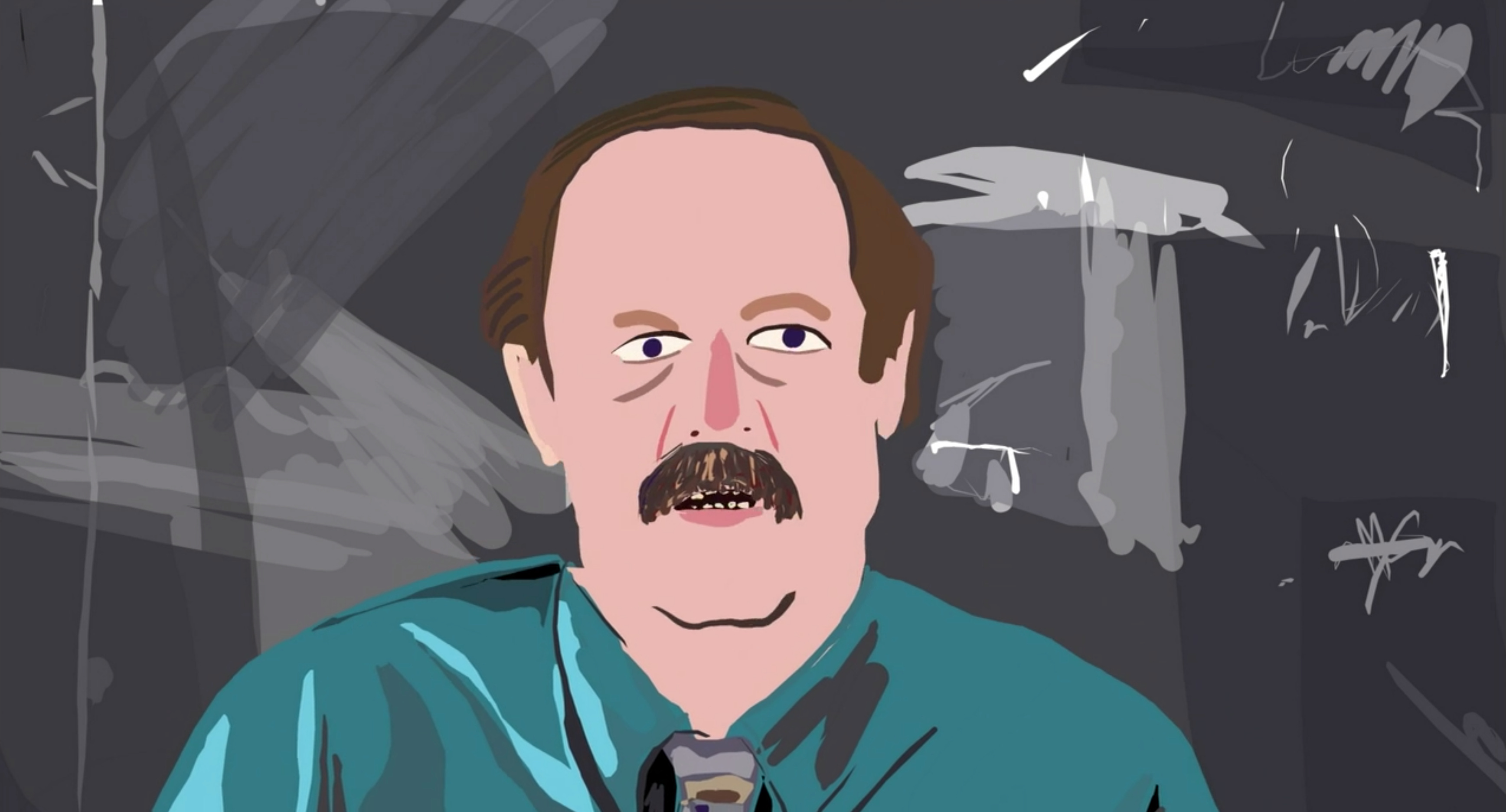
The theme of the digital age is the violence born of disembodiment and self-ignorance. That is the eternal reporting of aggression around the clock, every day. Violence is the quest for identity. The less people understand who they are, the more aggressive they will be.
In public life, the full-on digital age started violently.
Computer technology was quietly taking over during World War II and in the years beyond. Utility bills, school programs and flight reservations required digital technology, but it still seemed you went to it. Then in the 1980s I found out my old Nissan had four computers to keep it running. In the 1990s, the internet started appearing in “internet cafes” and in people’s homes, and gradually took over human relating.
What I call full digital conditions begin when we were told that a digital glitch — the Y2K bug — could end the world.
We were introduced to the computer problem as ubiquitous: as everywhere. This was about allegedly faulty chips that at midnight on Jan. 1, 2000 might suddenly think it was 1900 and stop operating, taking us with it.
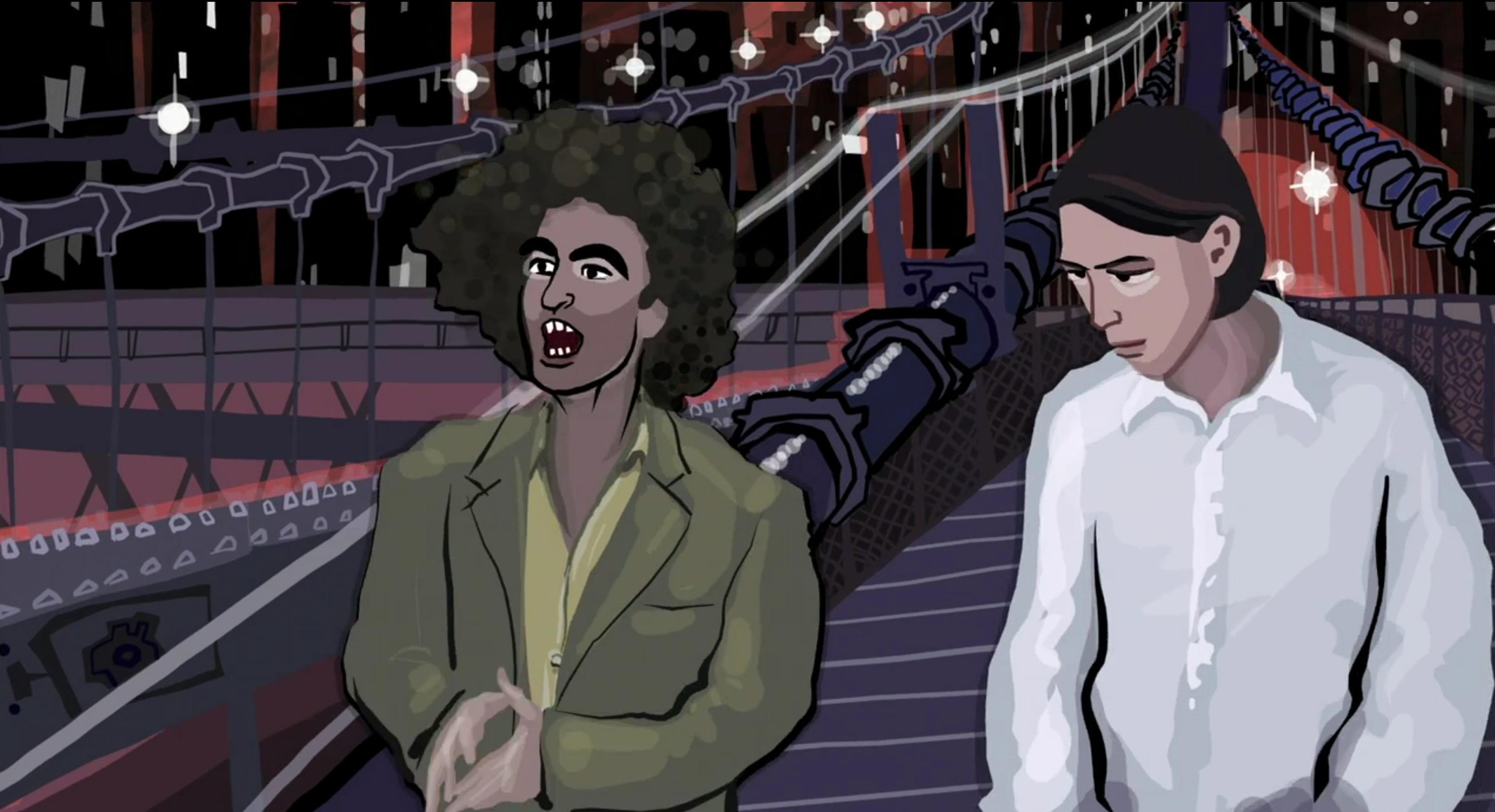
We were told this could affect anything. Society itself could fail. Nuclear bombs have chips. The power grid…the telecom grid…air traffic…medical technology…everything. That the world did not end does not matter. Nearly all of us were sitting around wondering whether it would.
That was followed by the stolen election of 2000, the symbol of which was a guy looking at a computer voting card through a magnifying glass. The stolen election was violent. You could feel that an era was turning; that some new force was taking over.
On that election night — 25 years ago Nov. 7 — I remember walking into a room with a television on, not knowing what was happening. It was like the TV was blaring out of a vortex with the whole room distorted around it. I felt disoriented looking at it, and shaky on my feet. I asked what was happening. I listened to the answer, and I knew the old world was changing…collapsing…in that moment.
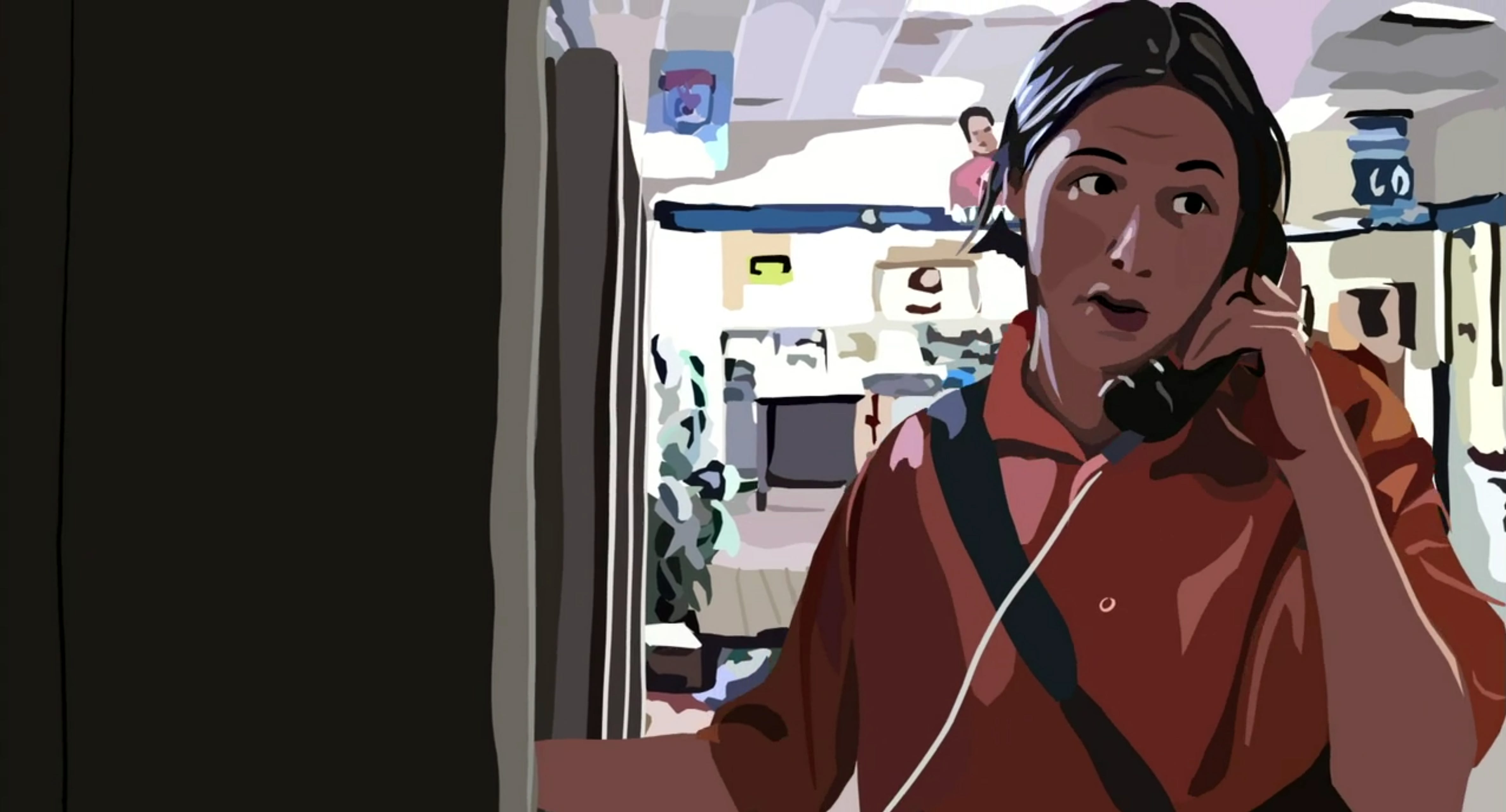
Capping off the digital-age commencement trifecta was the Sept. 11 incident. Nearly everyone saw, over and over, video of thousands of people dying simultaneously. The reaction: Anywhere from “oooh, how terrible” to “murder the rag heads.” Was any of that video real? Today we have legitimate reasons to doubt it.
The World Trade Center dropped like marionettes from a puppeteer’s hands. Weird things were going on, like reports of a skyscraper (WTC 7) falling down broadcast on multiple news outlets (BBC and Fox) before it actually did. TV news readers had become prescient and nobody noticed. Cause and effect had officially reversed.
Remember the gorgeous clear blue hint-of-autumn day, and the dreamy way those towers of steel and concrete crumbled into dust and floated to the ground? What to do about it? Of course, bomb and shoot people in other countries for the next 20 years.
If there was one moment of total capture of humanity and in particular, Western society, Sept. 11 was it. From that moment onward, anything could be presented to the public as real and nobody would know better. That was the mass cataclysm that shocked us all out of body and ripped a gap between one world and the other. It required massive amounts of explosives and the destruction of the iconic New York City skyline to bring it on — but it worked.
This is the answer to the riddle of why a “covid” scenario could have only happened under digital conditions. Only under digital conditions could a Fukushima incident (multiple total China-syndrome type meltdowns) be treated so casually, and disappear so quickly, with so few questions. Am I the only person who wonders if I’m getting some of that plutonium when I bite into sushi?

Laying in my bed one night when I first returned from Europe (around the autumn of 2007), I had a kind of vision/sensation. It was as if I was in a building with no roof. Not in the abstract: I felt it, as if it was real. My private space was exposed to the elements.
That’s the world we live in now. There is no longer any concept of private, much less the reality. But this is not the “there are no private thoughts” of A Course in Miracles fame — that minds are joined and thoughts are shared. The miraculous form of “no private” is about nothing to be ashamed of; of honest communication in a spirit of understanding and forgiveness.
The digital concept of “no private” is that of being invaded, intruded, tracked, traced and databased on the blockchain. It is the no private of condemned, shamed and blamed: of all of your text messages published to the world. It’s the no private of someone being able to upload a few photos of you and turn it into a little porno, or make a phone call to a relative using a fake version of your voice (or your granddaughter’s voice).
By some estimates, if you live in a city you are caught on video 300 times a day. Many of these are facial recognition cameras. Nobody asks why. To prevent shoplifting? Why are there license plate readers in nearly every urban and many suburban areas?

We have been catapulted not just into this wholly porous world of surveillance but are now also surrounded by and swimming in technology that hallucinates, deceives, spews bullshit as scientific truth, pretends to have feelings, writes phony books and songs, makes up fake legal citations, belches out endless videos of dogs chatting with space aliens and cats jumping backwards, and otherwise imprisons or anesthetizes the imagination.
Along the way, it devours physical land, fuel and water…to sustain a kind of electrical dream space that none of us asked for and none of us need.
Who cares? Each night Planet Waves archives about 30 to 40 articles on the topic. This publication has been viewed just 4,000 times in four months. I do not do this work personally, so I can tell you it’s amazing every single night.
Then there is the “universal ID” that will connect your “vaccine” record to your ability to spend money on food, and can limit where you travel (i.e., within 10 miles of your house or such). Money is being programmed to have limits. Under this plan, your Visa card will become more like a SNAP benefits card, even though it’s your money.
This morning, an article about “tokenization” landed in my inbox: how all assets, from your home to its contents, will (according to some guys in Switzerland and their cronies) allegedly be placed onto a blockchain ledger.
How will they get me to declare each of my drums, guitars and maracas? Insurance, of course! If it’s not on the blockchain, it does not exist.
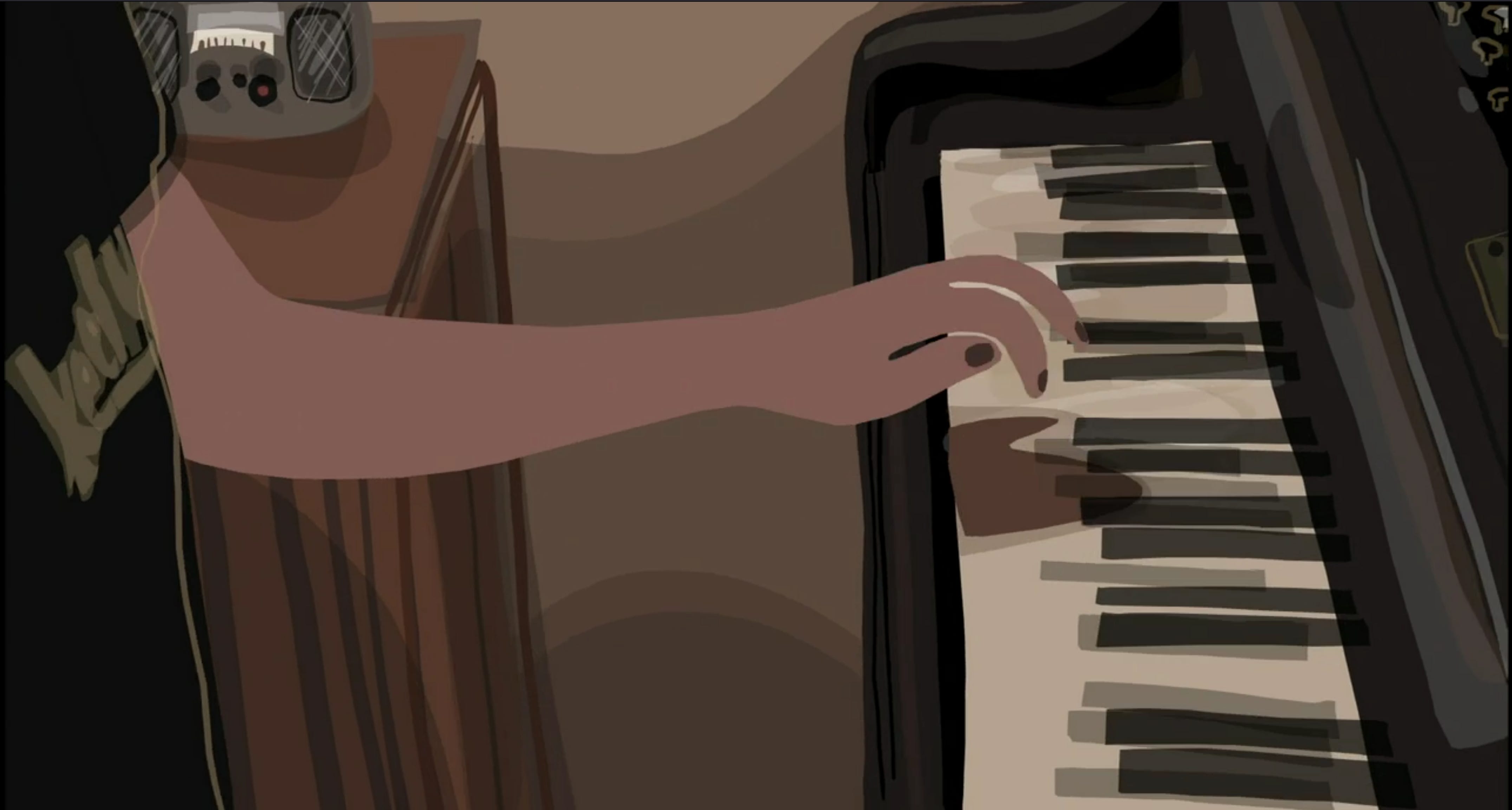
You don’t need to look far to find examples of how people think we are living in a simulation. Most of the “flat earth” theories involve the notion of a simulacrum or enclosed artificial reality, which people find gives them relief (I guess from space being so big; many of the theories aggressively deny the existence of “outer space”).
I seem to be the only writer proposing the the oh so popular “flat earth” phenomenon is a digital effect with many equivalents. Once converted to data and uploaded, the world lacks all dimension and depth, and people’s minds are equally distorted.
We hear constant cultural references to living in a matrix, discussions of blue and red pills, and “red pilling” people (forcing the truth onto them).
Spiritual texts from many ages have described ordinary physical existence as a secondary reality, an illusion, a parallel existence, a phenomenon of multiple dimensions and many other metaphors. According to A Course in Miracles, miracles occur because the world we see is an illusion, subject to change and the violation of its own supposed rules; the miracle gets you past the illusion and into contact with the underlying reality.
And yet our seemingly limited physical existence is seen by some spiritual traditions as a necessary condition of exercising free will, distinct in all of creation. What is unique about our world is that you can get anywhere from here. Yet without the physicality, we lose that access; we lose the ability to navigate and choose and end up floating in a kind of endless dream. It’s as if we’re guided by some weird GPS system where we never programmed a destination.
This is why it’s important to stop and assess your situation, right now.
Where am I and what am I doing here? Let the questions stand for a while.
With love,

Two Scenes from Waking Life
“The more that you talk about a person as a social construction or as a confluence of forces or as fragmented or marginalized, what you do is you open up a whole new world of excuses. And when [philosopher Jean Paul] Sartre talks about responsibility, he’s not talking about something abstract.
“He’s not talking about the kind of self or soul that theologians would argue about. It’s something very concrete. It’s you and me talking. Making decisions. Doing things and taking the consequences. It might be true that there are six billion people in the world and counting. Nevertheless, what you do makes a difference. It makes a difference, first of all, in material terms. Makes a difference to other people and it sets an example.
“In short, I think the message here is that we should never simply write ourselves off and see ourselves as the victim of various forces. It’s always our decision who we are.”



